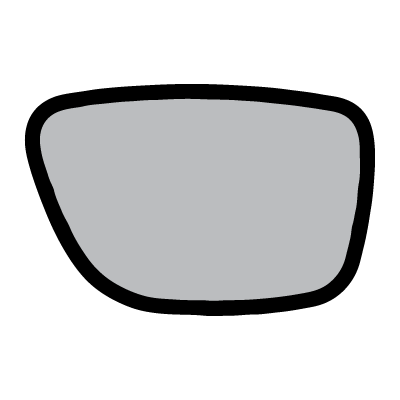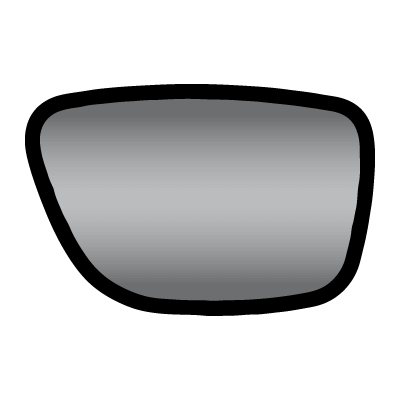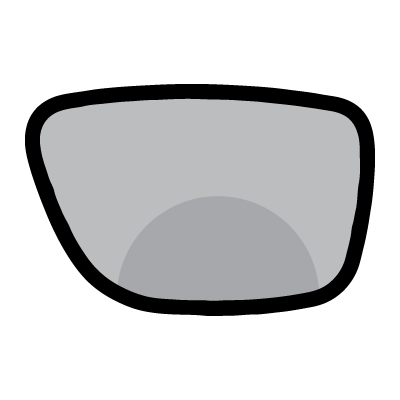A simple buyer’s guide for your next pair of glasses.
Whether it’s your first pair of glasses or your tenth, buying a new pair can be an overwhelming experience. Below is a simple guide that covers all the major elements you need to know before getting your next set of glasses.
Don’t worry, whatever your level of knowledge, our expert team is always happy to explain the whole process and answer any questions as well.

Single-vision distance & reading lenses
Single power lenses which have the same focal power throughout (top to bottom) and can be used to correct nearsightedness, farsightedness or astigmatism. Most people who wear spectacles before the age of 40 have single vision lenses.
Reading glasses are made by customizing single vision lenses to your individual distance, generally between 30 and 40 cm.
Progressive lenses
These lenses are meticulously designed to incorporate distance, middle and near-vision correction in a single lens. These lenses are personalized according to the wearer. If you have particularly unique eyes, or need bifocals but don’t want the obvious line in your lens, consider progressive lenses.


Bifocal lenses
Why carry two pairs of glasses when you can carry one? Bifocals help take care of near and long-distance vision by combining two prescriptions into one lens.
The upper part is used to help with distance correction, while the bottom portion is to help with near vision correction. These are excellent choices for people who have use for both reading and distance glasses.
Computer and office lenses
These lenses help mitigate Computer Vision Syndrome (CVS) which can give you dizziness, blurriness of vision, redness in the eyes, dry eyes or double vision.
These lenses often contain one or more of the following features:
- Slight Magnification
- Anti-Reflective
- Blue Light Filter

Lens Materials
Standard Plastic
Basic Lenses
Common Worldwide

Polycarbonate
Impact-Resistant
Active Lifestyles & Children

High-Index 1.6, 1.67, 1.74
Thin & Lightweight
All Prescription ranges

Lens Coatings and Tints
Lens Coatings and Tints
Single Vision lenses, Multifocals, Anti-reflective, Blue light lenses and the list goes on! What do they all mean? It’s easy to get confused in the land of lenses but we’re here to guide you through all the different types of lenses so that you can determine what’s best for your needs and lifestyle.
Anti-reflection coatings are added to your lenses to reduce reflections. When the reflections are gone, light can pass through the lenses easily which leads to clearer vision. The advantage being that your lenses look almost invisible, making them more comfortable and flattering.
Tired of squinting in the sun, scrambling to find your sunglasses then, once you’ve got your sunglasses on, stumbling in the dark when you get inside?
Maybe light reactive lenses are for you. These lenses automatically adapt to your light conditions. When you go outside the lenses will rapidly darken to reduce eye strain and squinting in sunlight.
Then when you go indoors they will automatically return to their clear state.
Multifocal lenses are designed to correct your distance, intermediate and near vision.
Our multifocal lenses utilise digital technology, which optimises vision at every point and reduces distortions.
Multifocals act as multi-purpose spectacles, offering convenience whether you’re reading and watching TV, grocery shopping or driving.
Polarised lenses are excellent at reducing glare and offer ultimate protection. They feature a filter that reduces reflected light from passing through the lens.
This filter can stop the squint and maximises clearer vision. This type of lens is especially great if you love fishing, boating or driving.
A single vision lens has the same prescription across the entire lens. An example of a single vision lens is distance or reading lenses.
Our Sun Tint choice of colours reduce the intensity of light and offer 100% protection from UVA & UVB rays. These lenses are great when viewing liquid crystal displays (LCDs) as they provide a clear view unlike polarised lenses which can sometimes make viewing LCDs challenging.
If you have a strong prescription thinner and lighter lenses are important. With the choice of thinner lens options you will find the right lens to make your glasses look spectacular and feel comfortable.